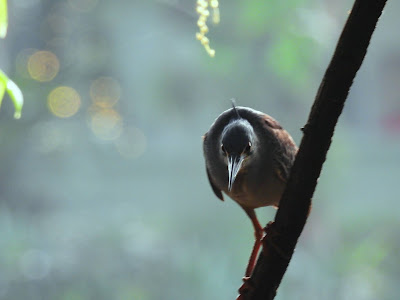Nature Photography: Can a Bridge Camera Get the Job Done?
Consider the Striated Heron. It is a tiny heron (40-48 cm long) closely related to the Green Heron of North America and the Galapagos Heron. My wife and I were out walking and she saw this bird perched on a liana that swings above a small waterfall and plunge pool. It was misty and the sun was behind the bird, so I was not sure if I could get a decent photo.
I started taking photos in black and white using my grandmother's old Kodak camera. Fifty years later I am still fighting the urge to conserve film- that
is, only to press the shutter if I am reasonably certain the result will
be worthwhile. Nevertheless, in this instance I managed to quickly aim and shoot, relying on the camera's autofocus capability. Fortunately the lens was already in the middle zoom position (178 mm, on a zoom range from 4.3 to 357 mm). The photo is not cropped.
Luckily I did not wait for the perfect moment else I
would have missed my opportunity. Just after I took the above photo the heron flew down and took up a stealth hunting posture standing on an old log at the front of the plunge pool. The bird was now closer to me, and I was able to zoom in on the head and upper body. This is the full zoom (357 mm, equivalent to a 2000 mm telephoto lens in an ordinary SLR camera). Because the tricky lighting conditions seems to confuse the autofocus I switched to manual focus. The shutter speed is 1/60 of a second. Amazingly, despite not using a tripod, the photo is reasonably sharp.
Here is my last photo. Do you see a white line to the right and behind the bird? No, it is not a lens flaw; it is part of a spider web.
Can you shoot worthwhile nature photographs using a bridge camera? I hope I have convinced you the answer is "Yes, you can".





Comments
Post a Comment